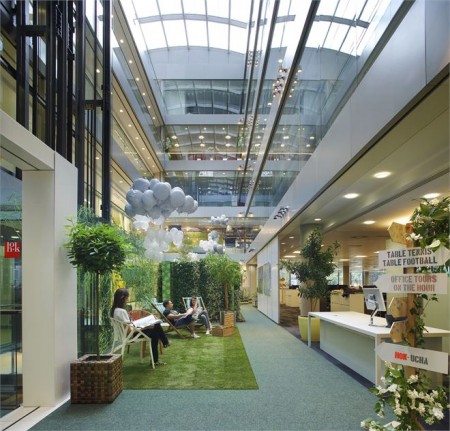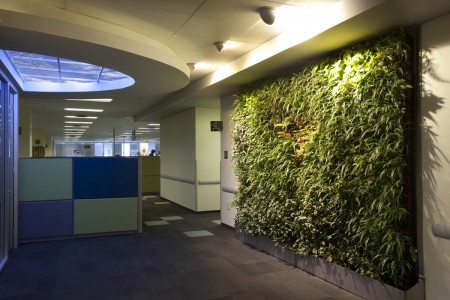There is a good chance you spent the majority of your day today in an indoor work environment. For many, this means you are indoors with limited access to natural light, fresh air, or window views. In a global report on workplace environments in 16 countries, 42% of 7600 employees had live plants in the office but 47% had no natural light. A fifth of these respondents reported having no natural elements in their office at all.
A common hypothesis used by business leaders and supported by research is that those who are more satisfied in their jobs are also more productive and more engaged employees. There is evidence that higher subjective wellbeing and job satisfaction at work are positively related to job performance, productivity, and organisational citizenship (e.g. being cooperative, friendly and trustworthy), and are negatively related to employee turnover and absenteeism. 1
Bringing nature indoors, or viewing nature through a window, can benefit health, productivity and creativity. Office workers with a view of nature report less stress, lower levels of tension and anxiety, greater job satisfaction and greater overall subjective wellbeing.1 Employees with nature views are also more likely to evaluate their own performance positively. Back in 1993, Rachel Kaplan, a leader in nature and health research, described the value of “micro-restorative” experiences. These experiences, quick glances out the window or at your office plant, cumulate over time to provide health and well-being outcomes. In 2006, Terry Hartig reformulated Kaplan’s early idea and also argued for the value of what he calls “booster breaks”. The environment in which we take lunch or a work break matters.
In the past few years, researchers have begun to examine whether health outcomes differ in office environments that provide only window nature views compared to offices with access to an outdoor green space. A study this year comparing access and views unsurprisingly suggests that both use of green spaces and visual access to them from indoors support employee wellbeing. However, it also suggested that the overall duration of time spent in these spaces may hold more significance for wellbeing than simply the frequency with which they are used.1 This translates into a workplace culture that encourages people to spend meaningful amounts of time outdoors, as fewer yet longer outdoor breaks may be more beneficial than brief daily ones.
The most common methods of improving the workplace environment include natural lighting and circulated fresh air. In the past decade, commercial development with some level of LEED certification has become the norm. About 50% of non-residential buildings include at least some degree of natural features and efficient energy use that ends up directly affecting the everyday experience and health of employees. Architects, designers and contractors must work together to create a truly healthy work environment. Intentional interior design using plants and organic materials, strategically placed outdoor green space viewable from inside, and natural light and air within the building are a strong combination.
Biophilic design is the theory, science and practise of creating buildings inspired by nature, with the aim to continue the individual’s connection with nature in the environments in which we live and work every day. Bringing nature indoors can be the easiest way to integrate biophilic design into an old space. Several studies, designers and best practices suggest actions you can take to improve your workspace:
– Employees tend to benefit from caring for and observing potted plants in their personal work space. Indoor plants and purposeful interior design are the most obvious solution.
– Effective ways of creating symbolic nature connections indoors include: water features with free flowing water; natural plants; the use of natural elements, such as wood and stone; and using highly textured fabrics that mimic the textures of natural materials.
– Seeing more trees, lawn and bushes or flowering plants in the window view is associated with higher levels of self-reported wellbeing. Lowering cubicle heights, and adding glass architectural walls to maximize daylight and views can support this.
– Natural light (as opposed to fluorescent lights) improves employee wellbeing, productivity, and creativity. It is also cost-efficent. Replacing florescent lighting with LED is another softer lighting option, and is 30% more efficient.
– Natural ventilation (for example, operable windows and breezeways) improves health and energy costs. Wireless technology is available to control lighting and HVAC systems. Water cooled chiller systems are one solution for more effective cooling during the summer months.
– A living green wall improves indoor air quality, is a natural temperature control, and provides indoor green space for mental health.
– Too much vegetation (views that feel jungle-like) or loud rapidly flowing water can add stress rather than decrease it.
– Office color schemes that incorporated accents of green, blue and brown were more predictive of employee happiness, productivity and creativity than blank white walls. However, the particular colors associated with these outcomes appear to differ between countries.
– Some recommend bench marking energy use and sharing goals to encourage engagement.
—


